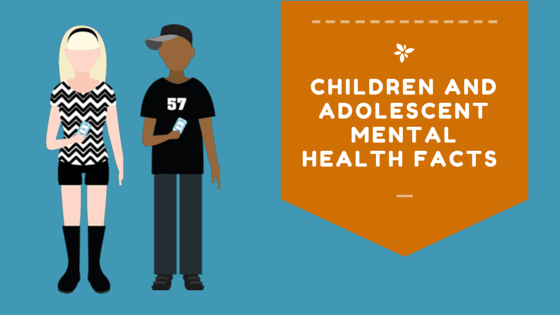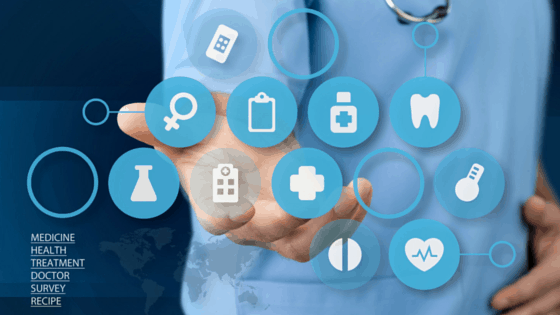
by Thomas Lethenborg | Dec 14, 2023 | ADHD, Anxiety, Children and Adolescents, Depression, Eating Disorders, Mental Illness, News
Carelink Nærhospital and Monsenso entered into a partnership and expect to deliver the first digitally supported mental health services in January 2024.
Carelink Group, Denmark’s largest private health and welfare services group, and Monsenso, a leading provider of validated digital mental health solutions, have entered into a groundbreaking partnership that will redefine the way mental health services are delivered for the benefit of patients, healthcare professionals, and the healthcare sector as a whole.
Mental health is a crucial part of our society, and the need for innovative solutions to address challenges in this area has never been bigger. Carelink’s extensive experience in delivering high-quality healthcare services, combined with Monsenso’s advanced digital health solution, has the potential to create lasting value for both the healthcare sector, the work of healthcare professionals, and particularly for patients. The partnership aligns with the Danish government’s initiatives in psychiatry and the recently presented Finance Act for 2024.
Key points in this partnership include:
- Highly scalable digitally supported healthcare services: The partnership creates an innovative foundation that integrates traditional mental health services with advanced digital solutions. This comprehensive offering will provide individual users with tools for digital self-help, self-monitoring and effective remote clinician follow-up before, during, and after treatment.
- Addressing workforce issues: The shortage of qualified personnel in mental health is a challenge. This partnership aims to alleviate the problem by optimising resources and leveraging technology to expand the reach of healthcare professionals, enabling them to serve a larger number of patients.
- Reduced waiting times: Long waiting lists for mental health services are a significant problem nationwide. The collaboration will streamline the process and offer timely assistance through a combination of digital solutions and remote follow-up, ensuring that patients receive the support they need promptly.
- Improved patient experience: Patients will experience a more patient-centered and convenient approach to assessment and treatment for mental disorders. The partnership will enhance the patient experience, promote patient involvement, and provide effective follow-up, support, and treatment.
- Quality treatment: The combined offering will promote better treatment outcomes, as patients will have the necessary tools and support for digital self-help, self-monitoring, and effective remote follow-up. This is expected to lead to improved quality of life, more efficient processes, and a reduction in relapses.
“We have entered into this partnership to meet the pressure on psychiatry and the healthcare sector today. We aim to create a Digital First but not Digital Only offering, making waiting lists, assessment, and treatment processes more patient-centric. We believe we can achieve this by leveraging the latest clinically validated technologies to effectively follow up on treatment – also at a distance and in patients’ own homes,” says Maria Pico Almsgaard, CEO of Carelink Nærhospital.
“The potential in the partnership to create easily accessible, nationwide offerings is significant. Far too many patients are waiting for treatment and not provided with the effective, digitally supported offerings that they would like. Better assistance for children and young people, as well as digital offerings, is a priority for the government, and that’s why we have also started with digitally supported offerings for children and young people, but with new pathways continuously added,” says Thomas Lethenborg, CEO of Monsenso.
Click the button below for more information about the Monsenso solution.

by Thomas Lethenborg | May 18, 2016 | Mental Illness, mHealth
The World Innovation Summit for Health (WISH) recently released a Report on Mental Health and Well-being for children titled “Healthy Young Minds. Transforming the mental health of children.”
This infographic represents some of the facts displayed in the report.


by Thomas Lethenborg | Feb 9, 2016 | Borderline
Borderline personality disorder (BPD) is a severe mental illness that causes unstable moods, behaviour, and relationships. It usually begins during adolescence or early adulthood [1].
Most psychiatric disorders cause a permanent abnormal social behaviour, whereas borderline personality disorder only causes brief psychotic episodes. As a result, experts believe this is an atypical mental illness that can be misleading [2].
According to a 2015 study undertaken by French psychiatrist Lionel Cailhol, BPD is equally common in both genders. Nonetheless, in clinical populations, females represent 75% of all patients. Some experts believe this is due to men having difficulty seeking help, especially in psychotherapy [3].
BPD usually appears during late adolescence. However, clinicians recommend that a diagnosis should not be made before the age of 18 years. Patients should be treated later on when the symptoms are clear and persistent.
The most common causes of BPD are believed to be early maternal separation and childhood trauma [3]. However, identifying symptoms at an early stage or educating a child in a manner that could prevent BPD would spare the patient a lot of pain, time and money. As life-coach Tami Green explains in one of her talks, a good way of avoiding BPD is to accept people and their flaws without trying to change them. She gives an example of a very sensitive child that is pressured by their parents to become tougher and bearable, however the pressure violates this child to the core of who they are. It can be very difficult to handle this sort of conversation without criticizing them. [4]
It is particularly hard for families of adolescents, because they need to help their children cope with their behaviour, provide them with help, and teach them to manage their risk-taking behaviour. Besides the many challenges that young people face, adolescents suffering from BPD can be very vulnerable and difficult to handle [3].
BPD symptoms evolve over time, however, here is a list of a few common symptoms that teenagers face:
- Para-psychotic manifestations
- Risky sexual behaviour
- Regression linked to treatment
- Counter-transference problems, “special” treatment relations
- Abuse, dependence on psychoactive substances
- Self-harm
- Repeated suicide attempts
- Demandingness
- Severe identity disorder [3]
One of the best therapies that helps patients to cope with BPD is Dialectical Behavioural Therapy (DBT). This method consists of a cognitive-behavioural approach that emphasises the psycho-social aspects of treatment. DBT is conceived for people that are prone to react in a more intense and out-of-the-ordinary manner toward certain emotional situations, primarily those found in romantic, family and friend relationships [5].
The Monsenso mHealth solution can help clinicians monitor and treat young patients suffering from BPD. In fact, the Mental Health Services in the Region of Southern Denmark (MHS) will soon begin clinical trials of a mobile coach app that supports DBT of BPD patients. To learn more about this project, click here!
References:
[1] About Borderline Personality Disorder (BPD). National Education Alliance Borderline Personality Disorder
http://www.borderlinepersonalitydisorder.com/what-is-bpd/bpd-overview/
[2] Borderline Personality Disorder. National Institute of Mental Health.
http://www.nimh.nih.gov/health/topics/borderline-personality-disorder/index.shtml
[3] Borderline Personality Disorder in Adolescentes. L. Cailhol, L. Gicquel and J.P. Raynaud (2015)
http://iacapap.org/wp-content/uploads/H.4-BORDERLINE-2015-UPDATE.pdf
[4] How BPD Forms in a Child. Video. T. Green (2009)
https://www.youtube.com/watch?v=Ct1ZmMCRP18
[5] An Overview of Dialectical Behavior Therapy. Psych Central Staff
http://psychcentral.com/lib/an-overview-of-dialectical-behavior-therapy/
[6] Borderline Personality Disorders: Signs, Symptoms and Treatment
https://www.choosingtherapy.com/borderline-personality-disorder/

by Thomas Lethenborg | Dec 15, 2015 | mHealth, Patient Engagement
Earlier this year, Deloitte published a report titled “Connected Health: How Digital technology is transforming health and social care.” The information on this blog post has been obtained from this report.
Connected health or technology-enabled care (TEC) is the collective term used for telecare, telehealth, telemedicine, mHealth, digital health, and eHealth services. TEC is now seen as a fundamental part of the solution to solve many healthcare challenges. TEC helps people self-manage their health and well-being, alert healthcare professionals in case of any changes in an individual’s condition and support medication adherence. It also helps clinicians and care providers deliver more efficient and cost-effective care.
Digital technology is advancing exponentially, and its cost is becoming more and more affordable. At the same time, the demand for more cost-effective healthcare is rising. Now more than ever, healthcare authorities need to adopt new technologies to help meet these challenges.
An aging population
In the UK, as in other parts of the world, the population is increasing, and people are living longer. These two factors, in addition to a rise in chronic conditions, present new healthcare challenges.
Over 25% of the population in the UK are affected by a chronic condition, and an increasing number have multiple conditions. It has been appraised that people with long-term conditions use up to 50% of all GP appointments and 70% of days spent in hospital beds. It has also been estimated that their care absorbs 70% of hospital and primary care budgets in England.
Use of mobile devices is increasing amongst all age groups
Although ownership of smartphones and tablets is growing rapidly, the older population, who are the largest users of health and social care services, hadn’t adopted this technology until now. However, in 2014, baby boomers generated the fastest year-on-year growth in smartphone penetration.
Additionally, smartphone owners are encouraged to exercise, lose weight and improve their health, with the help of numerous mobile health apps.
Other market drivers
The demand for apps and wearable devices is also being driven by an increased focus on personalised care. Large pharmaceutical companies are now using apps and wearables to gather valuable health-related patient data, support their research, and provide an holistic service to patients.
In 2014, the leading pharmaceutical companies had an increase of 63 % in unique apps compared to 2013. In just one year, the total number of downloads of pharmaceutical apps increased by 197% as shown in Figure 1. These apps deliver education and training, can titrate medication and monitor compliance.
Figure 1. The number of apps published by leading pharmaceutical companies, 2013 and 2014.

There has also been an increase in on-line patient communities, using social media as a platform to exchange experiences with patients and carers.
Increasing patient trust in health apps
There is strong evidence that patients are now more than ever concerned about self-care, and they are interested in boosting their health and well-being. In addition to this, health technology companies are working to improve the quality of apps, increase user confidence and trust, and launch informed decision-making in app selection for health professionals, patients and the public.
Agencies like the US Food and Drug Administration (FDA), or NHS Choices and its NHS Health Apps Library have developed criteria that judge apps for safety and technical proficiency. For example, for apps to be included on the NHS Choices search website, which in early 2015 lists around 150 apps, they must be reviewed by a technical team (testing relevance, legal compliance and data protection), then by a clinical team (to test scientific rigour).
PatientView is an independent organisation that has developed a systematic method of appraising health apps. Until April 2015, there were 363 apps recommended for the Apple platform and 236 for Android, with smaller numbers recommended for use on other platforms.
In 2014, PatientView undertook a survey of 1,130 patient group members to identify what people want from health apps as shown in Figure 2.
Figure 2. What do patients and carers want from health apps?

Reference:
Connected Health: How Digital technology is transforming health and social care. Deloitte Health. http://www2.deloitte.com/content/dam/Deloitte/uk/Documents/life-sciences-health-care/deloitte-uk-connected-health.pdf

by Thomas Lethenborg | Dec 3, 2015 | Bipolar, mHealth
Bipolar disorder, also known as manic-depressive illness, is a brain disorder that causes unusual shifts in mood, energy, activity levels, and the ability to carry out day-to-day tasks. [1]
People suffering from bipolar disorder will have periods or episodes of depression – where they feel very low and lethargic mania – where they feel high and overactive. [2]
Unlike simple mood swings, each episode of bipolar disorder can last for several weeks and some people may not experience a “normal” mood very often. [2]
Getting an accurate diagnosis is the first step in bipolar disorder treatment. However, this isn’t always easy. The mood swings of bipolar disorder can be difficult to distinguish from other problems such as major depression, ADHD, and borderline personality disorder. For many people suffering from bipolar disorder, it takes years and numerous doctor visits before the problem is correctly identified and treated. [3]
Indicators of bipolar disorder:
- Repeated episodes of major depression
- First episode of major depression was experienced before age 25
- First-degree relative suffering from bipolar disorder
- Mood and energy levels are higher than most people’s when not depressed
- Oversleeping and overeating when depressed
- Episodes of major depression are shorter than 3 months
- Lost contact with reality while depressed
- Suffered from postpartum depression in the past
- Developed mania or hypomania while taking antidepressants
- Antidepressants stopped working after several months
- Tried three or more antidepressants without success [3]
If a person is not treated, episodes of bipolar-related mania can last for between three to six months. Episodes of depression tend to last longer, for between six and twelve months. However, with effective treatment, episodes usually improve within about three months. [2]
Most people with bipolar disorder can be treated using a combination of different treatments that can include:
- Medication such as mood stabilisers and antidepressants
- Learning to recognize triggers and early warning signs of an episode of depression or mania
- Psychotherapy to deal with depression and provide advice on how to improve relationships
- Lifestyle advice such as doing regular exercise, planning activities you enjoy that give you a sense of achievement, and advice on improving your diet and getting more sleep [2]
Mobile health technology
The Monsenso mHealth platform is based on The MONARCA Research Project, aimed at developing and validating a solution for multi-parametric, long-term monitoring of behavioral and physiological information relevant to bipolar disorder.
The Monsenso solution can help predict and prevent episodes by training patients to recognize their early warning signs, which are symptoms that indicate an oncoming episode [4].
In particular, during the research project, it was discovered that these three parameters are crucial in keeping a bipolar patient stable:
- Adherence to prescribed medication: Taking all medications on a daily basis, exactly as prescribed.
- Stable sleep patterns: Sleeping eight hours every night and maintaining a consistent routine of going to bed, waking up.
- Staying active both physically and socially: Getting out of the house every day, going to work, and engaging in social interaction.
Therefore, the Monsenso solution includes five core features that support a patient’s self-management:
- Self-assessments – Reminded by an alarm, patients enter subjective data directly into the system through their smartphones. This data includes mood, sleep, level of activity, and medication. Some items can be customized to accommodate a patient’s specific needs, while others are consistent to provide statistical analysis.
- Activity monitoring – Through a GPS and accelerometer, objective data is collected to monitor a patient’s level of engagement in daily activities. The system can also measure the amount of social activity based on phone calls and text messages.
- Historical overview of data – On the web portal, patients and clinicians can obtain a two-week snapshot of a patient’s basic data for immediate feedback. The portal also gives them access to a detailed historical overview of the data, enabling them to explore it in depth by going back in time, and focusing on specific variables.
- Coaching and self-treatment – The MONARCA systems supported psychotherapy in two ways. Firstly, through customizable triggers that notify the patient and clinician when the data potentially indicates a warning sign. Second, since the patients have access to their own Early Warning Signs, it empowers them to learn more about them.
- Data sharing – To strengthen the relationship between patients and clinicians, important information and treatment decisions are shared.
Resources:
[1] What is bipolar disorder? National Institute of Mental Health. http://www.nimh.nih.gov/health/topics/bipolar-disorder/index.shtml
[2] Bipolar disorder. National Health Service (NHS) UK. http://www.nhs.uk/Conditions/Bipolar-disorder/Pages/Introduction.aspx
[3] Bipolar disorder treatment. HelpGuide.org http://www.helpguide.org/articles/bipolar-disorder/bipolar-disorder-treatment.htm








